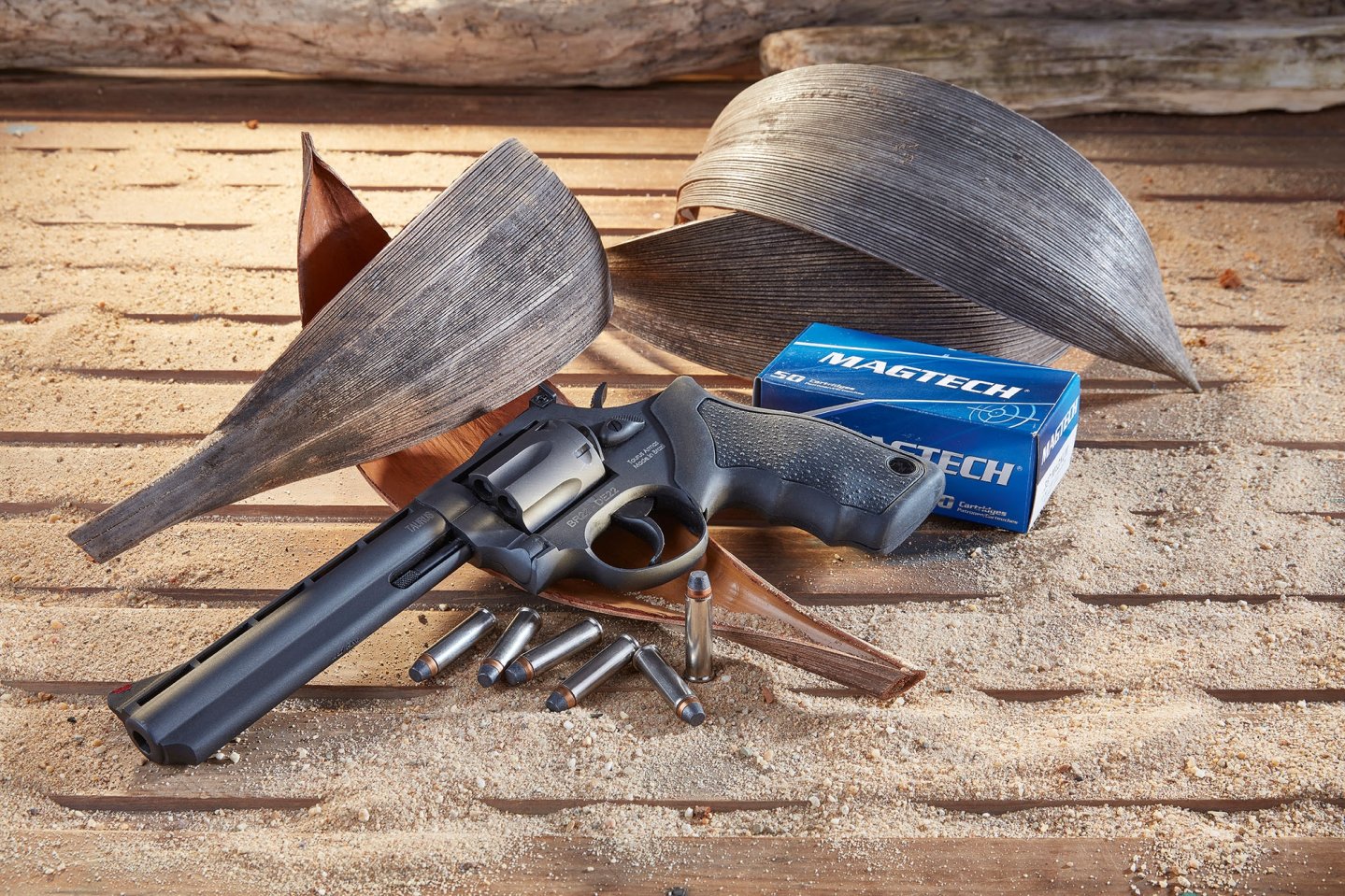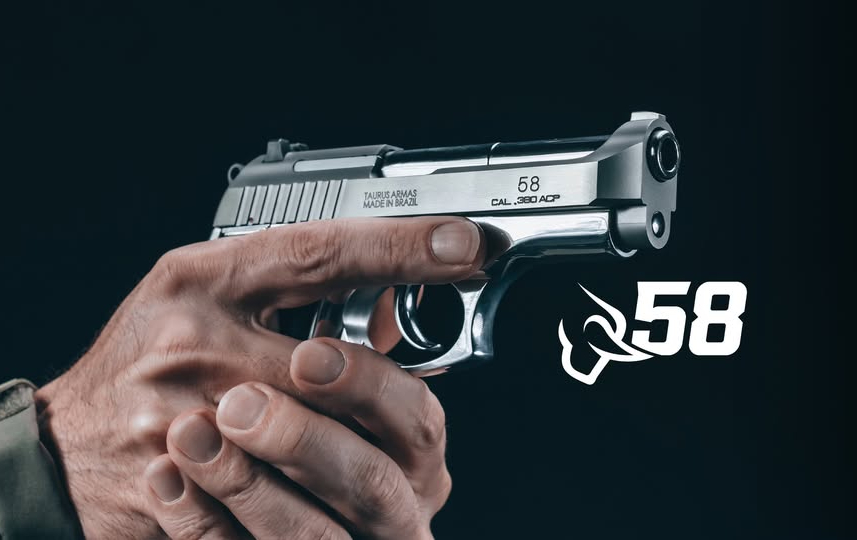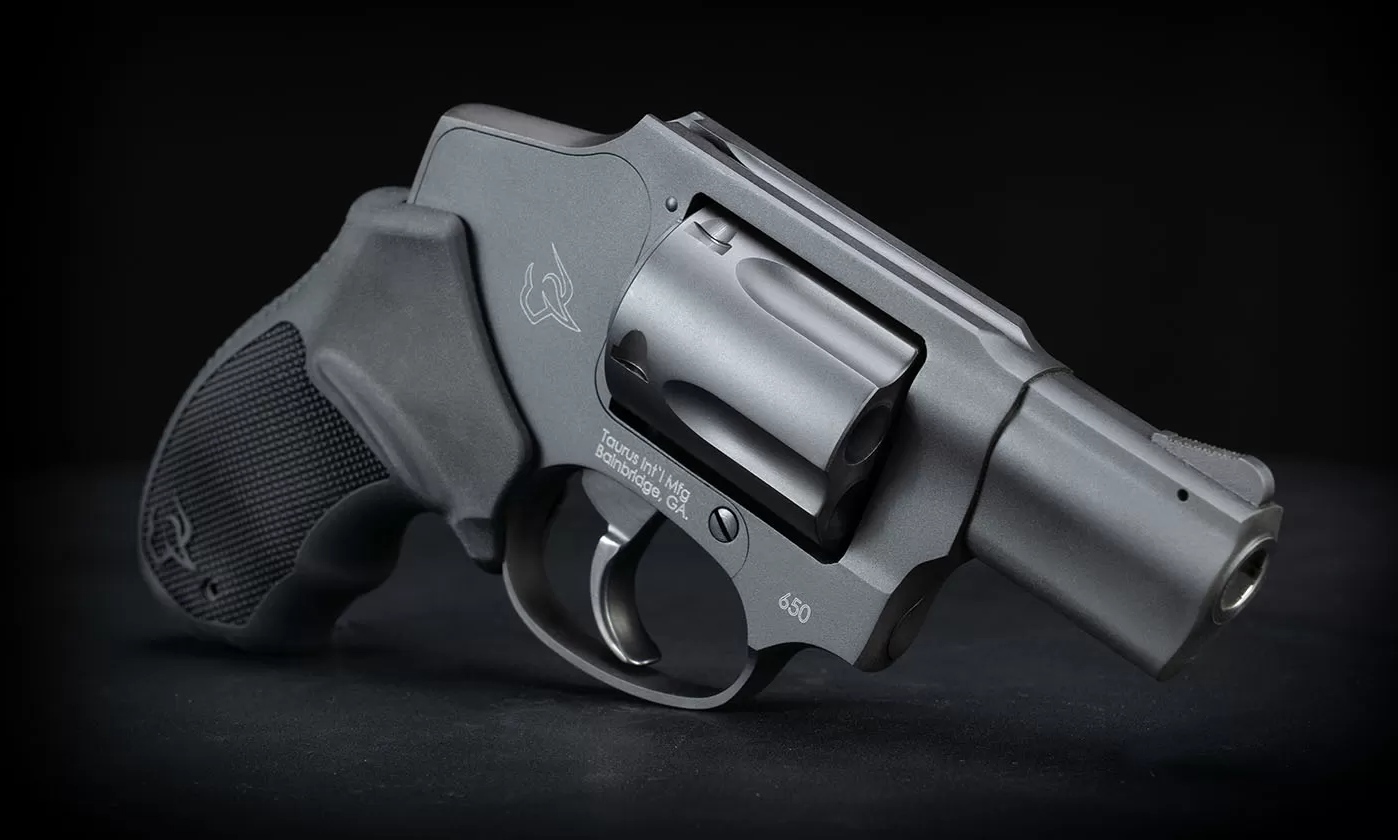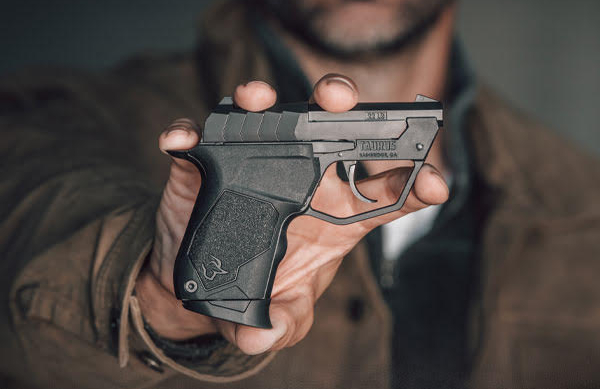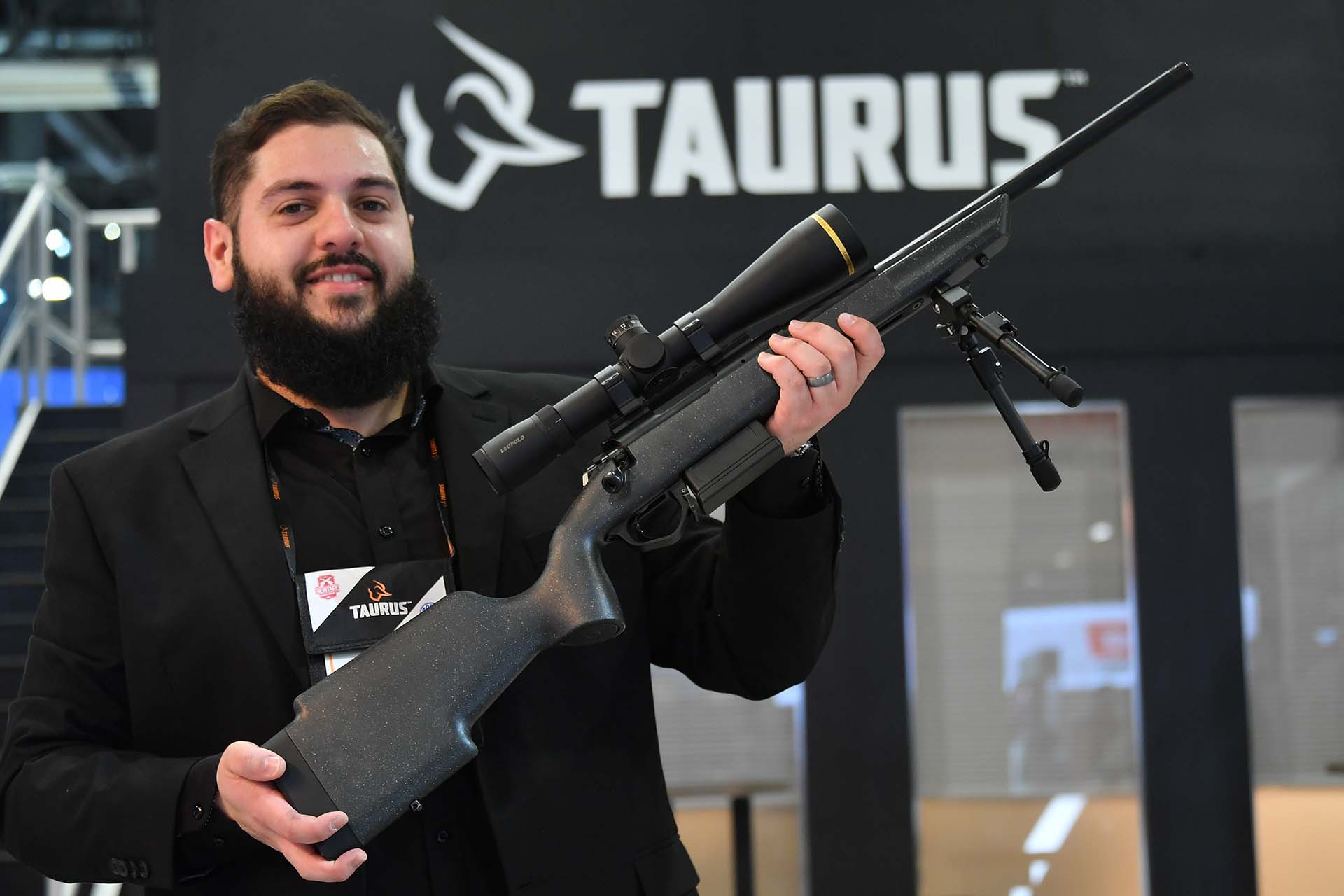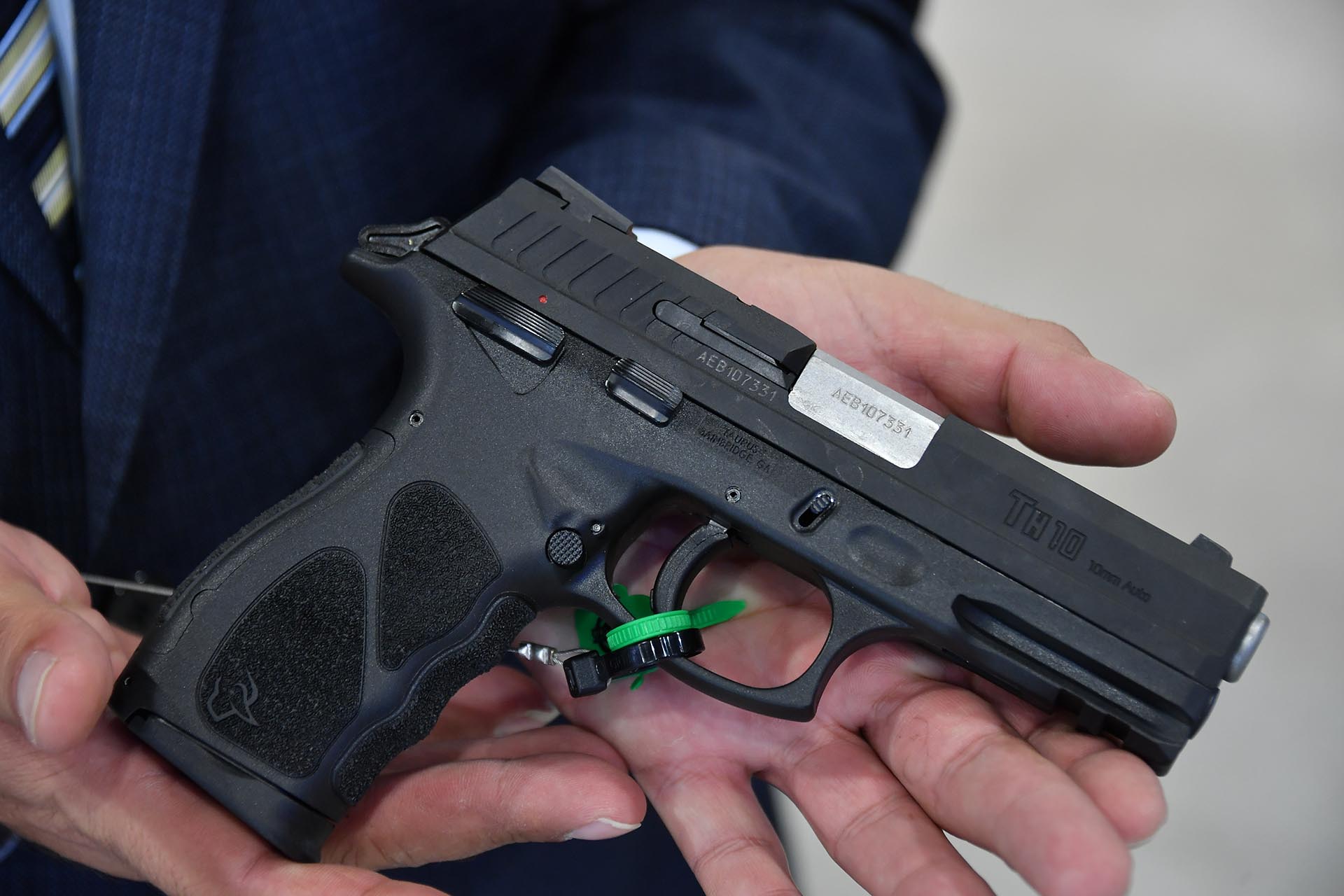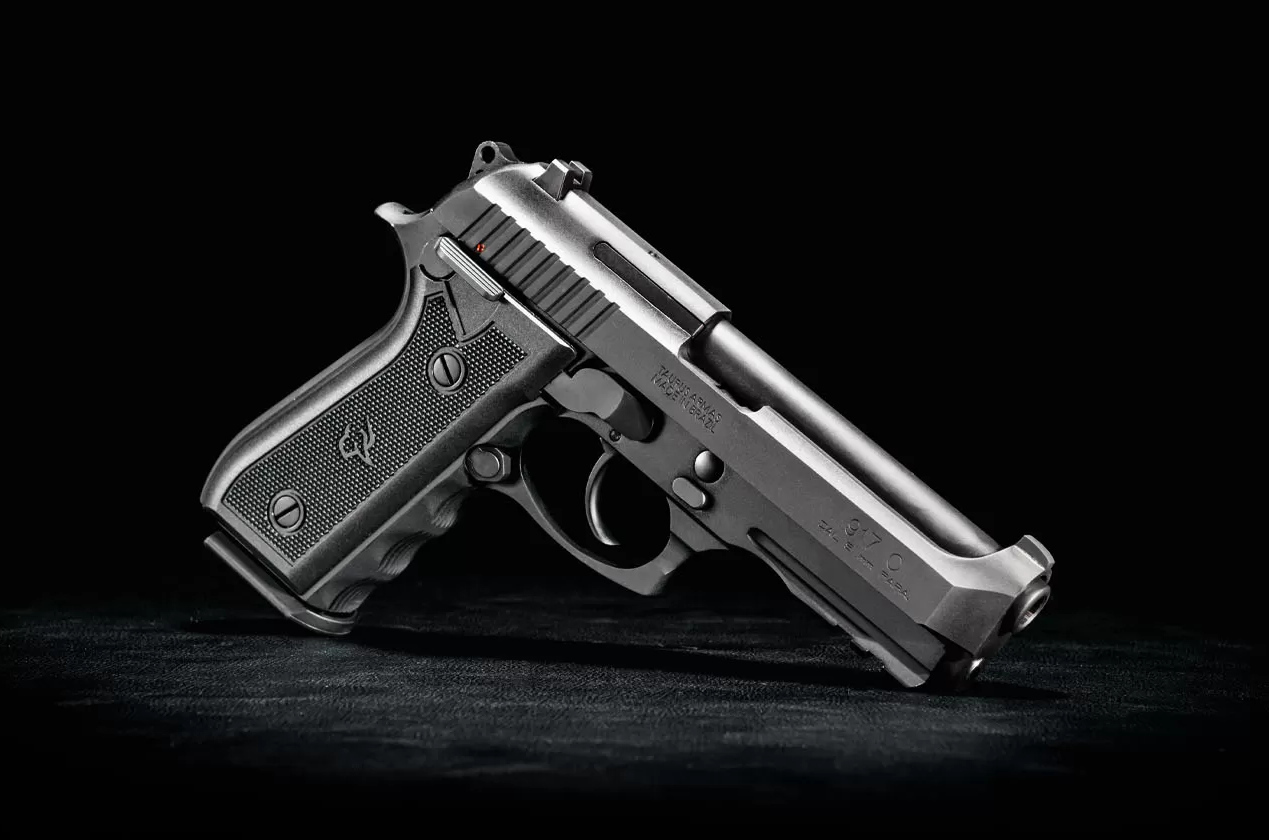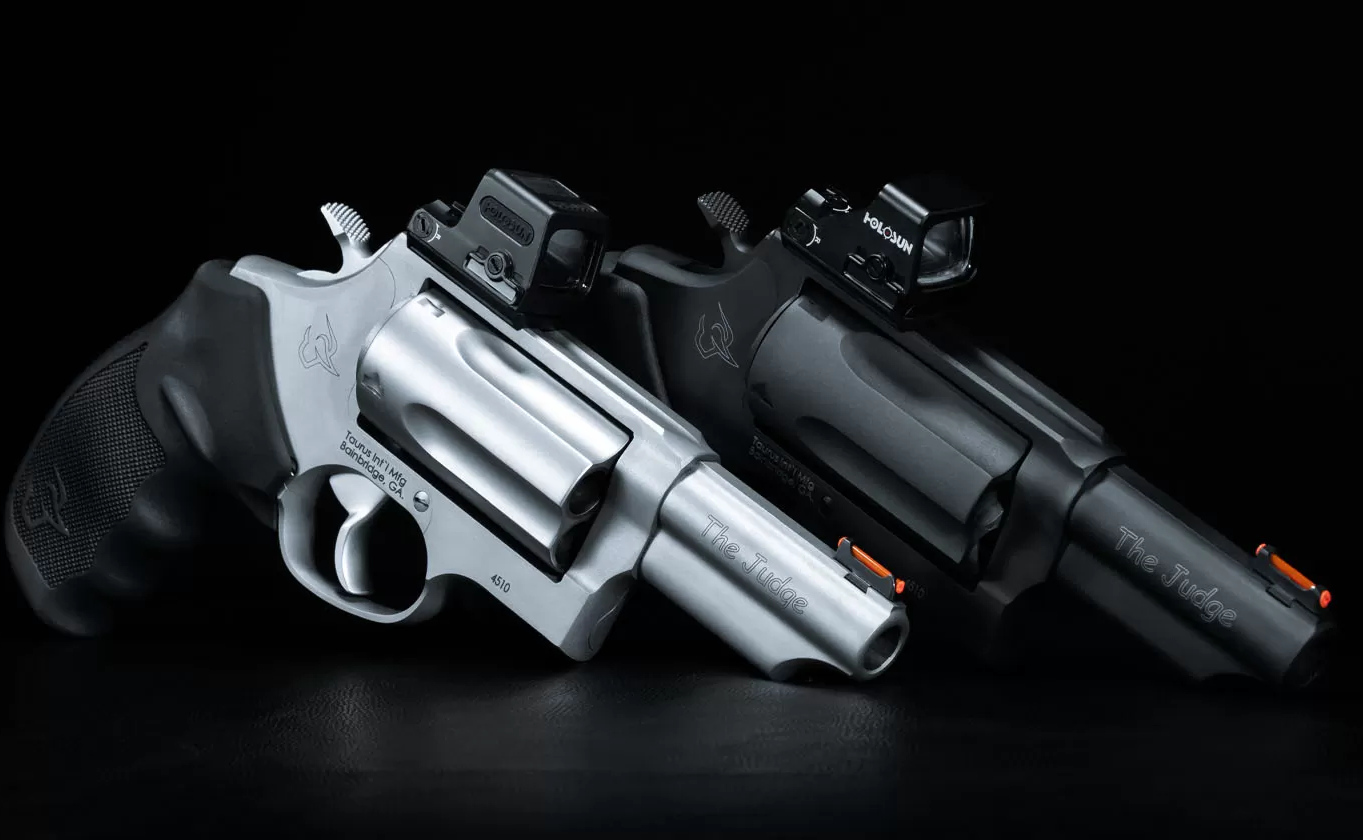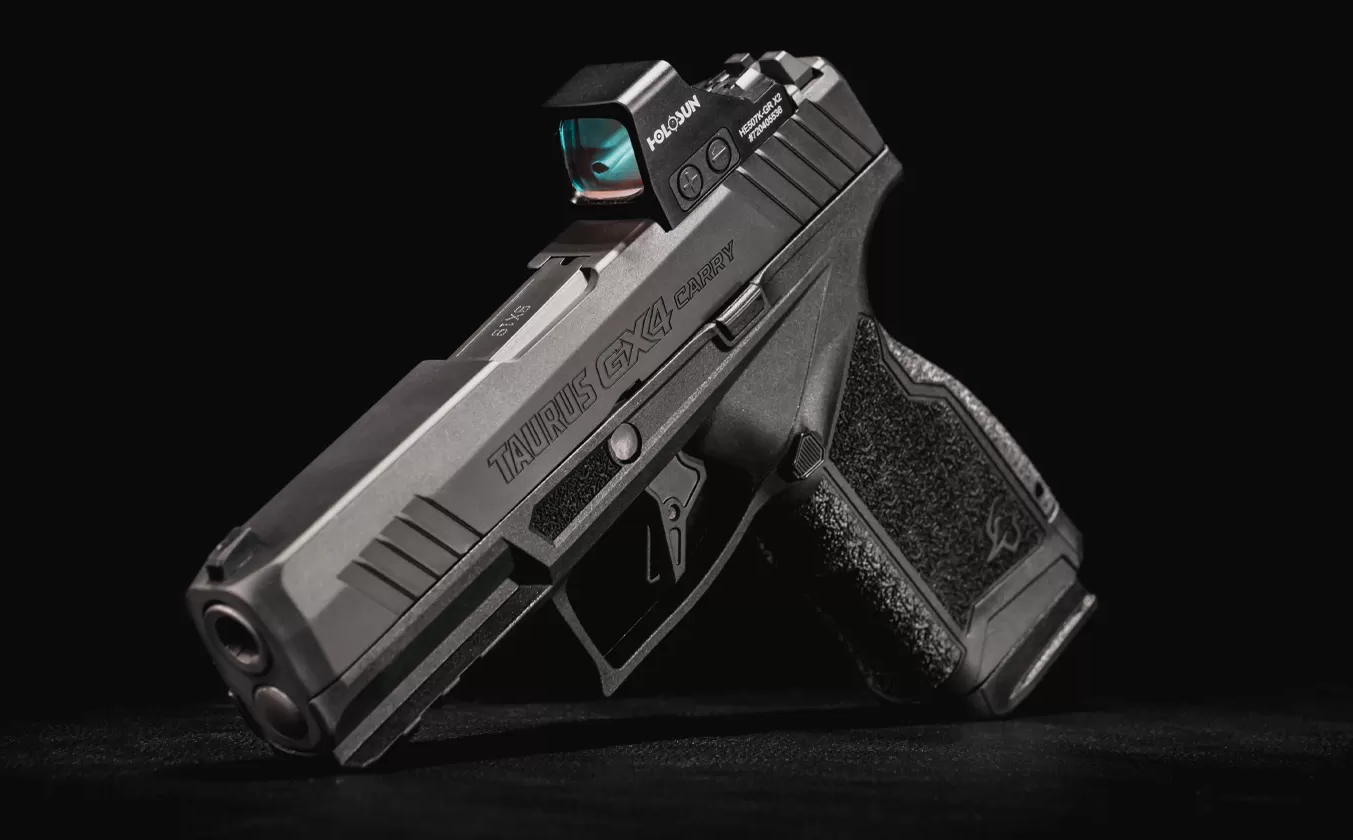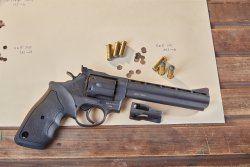
Taurus – this brand name once stood for decidedly innovative products, or more precisely, unusual revolvers. The very impressive Raging Bull in the then super caliber .454 Casull is unforgotten. Something like that did not exist as an (affordable) DA/SA revolver until then. That was a good 25 years ago. And apart from this Super Magnum mania, which was rampant at Taurus long before Smith & Wesson's .500 S&W, Taurus also had very unusual versions for smaller calibers. For example, the Model 218 (Raging Bee) in .218 Bee, or the Model 22H (Raging Hornet) in .22 Hornet caliber. These came with 10-inch barrels, being designed for varmint hunting. There were also revolvers in .30 Carbine. And even the first ultralight models, such as the Taurus Titanium, set new weight standards with this material. The Taurus developers were obviously not afraid of unusual materials or combinations of ultra-powerful cartridges with very short barrels. What were "recoil grips" or compensators for? From 1995 until after the turn of the millennium, the new Taurus annual catalogs read almost as exciting as the adventures of Apollo 13, while the new line-up of some competitors aroused little more interest than instructions for building a compost bin. And the Brazilian revolvers were also inexpensive – very inexpensive, actually. But there is no light without shadow: away from the mostly four- to six-inch models in calibers such as .357 or .44 Magnum, endorsements for interesting but unusual developments are given only very hesitantly, if at all.
In addition, in almost all sporting federations there are disciplines that are shot under time pressure, i.e. often in double-action mode. And there an action with coil springs instead of leaf springs hardly works with a "soft" trigger pull, which brings advantages in fast strings. However, shooters who shot all disciplines exclusively in single-action mode were not bothered by this, and saved quite a bit of money on the purchase. That also worked quite well. We therefore selected a revolver that – although no longer produced – fits the sporting regulations of all federations and is also ideal for a large number of shooting disciplines. We were more than excited!
The Taurus 689 in .357 Magnum in detail
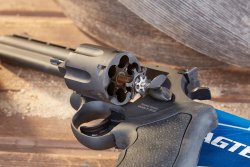
It catches the eye as soon as you open the box: blacker than black does exist. Something like a super-light-absorbing matte black. As far as avoiding unwanted reflections on a gun when shooting is concerned, the Taurus 689 might represent the current optimum in surface coating. Gripping the gun to take a closer look at the matte black finisg, the palm of the hand reported a deficiency: the rubber grip offers sufficient height, is also as well-contoured as it is non-slip, but at just under 30 millimeters wide at its thickest point, it's a bit thin even for medium-sized hands. The revolver itself, which has the size of a typical six-inch revolver in .357 Magnum, offered no further ergonomic features. All controls can be reached easily and function in a cleanly defined manner without much effort. The balance and weight of the new Taurus 689 immediately conveys familiarity. Somewhat closer to the Colt Python than to the S&W Model 686. Aiming is natural, the sight line does not need to be corrected by re-gripping. A positive note for sport shooters: not only is the rear sight relatively large and angled somewhat toward the shooter, it also dispenses with the notch white outline that tends to be distracting when target shooting. The familiar (dark) red plastic insert, on the other hand, is also found on the ramp front sight of the Taurus.
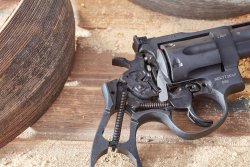
Unfortunately, the front sight is not pinned. If you want a more contrasty sight picture, you have to file off the rear frame of the plastic insert (ramp) and blue it. This will produce a shadow grain effect. Or spend more money, remove the fixed front sight completely and have it replaced with a pinned one. The rear sight blade can be adjusted without the need for magnifying glasses thanks to relatively large slotted screws, and the adjustment announces itself with audible clicks. Brazilian originality becomes visible when the cylinder is swung out; the cylinder is not locked-up by a center bolt locking into the cylinder ejector rod, but by a plunger in the crane and a corresponding milled recess in the frame. The cylinder latch and hammer spur have a sharp checkering, which is very conducive to fingertip grip when operating them. The trigger mechanism of the new Taurus works against the testers' memories. They remembered that in old models the double-action trigger has rather bumpy characteristics until release, but in single-action trigger had almost no overtravel. With the new trigger, when shooting in DA the index finger feels like it is only working against the spring pressure, which is top! When shooting in single action mode, however, a slight creep is noticeable. The cylinder gap of 15 hundredths of a millimeter is still within the green range, and the cylinder star is supported against twisting by two alignment pins. When swung-out, the cylinder rotates without scratching, and the ejector rod does not show any wobbling.
Test-fire: on the shooting range with the new 357 Taurus 689
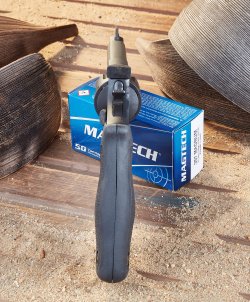
rectangular rear sight also satisfies sporting needs.
Due to the barrel twist length, the sticking point for revolvers in .357 Magnum caliber is often the slower .38 Special caliber. The Taurus was able to impress us from the ransom rest. While it didn't produce top groupings, it did produce some groups that certainly tore at the ten (50-mm diameter). The best groupings with factory and home-loaded cartridges in .357 Magnum were around and just under 40 millimeters. That is, some were still entirely within ten. Deposits on the first shot after swinging-in the cylinder were more frequent. But these were within the range of what other brands allow themselves. From the hand, trigger pull was not much of a problem when shooting in DA because of the clean characteristics. The small "creep" in SA mode can still be compensated for in disciplines with no time pressure. When unloading, the ejector stroke of 24 mm does not cause any problems even with long cases, but shooters acting under time pressure should not press on the ejector rod, but knock it instead. Cylinder chambers showed subtle tool marks, but no case tended to stick. Also, ejection resistance remained the same, and equally low. No malfunctions or annoyances occurred during the test, either from the hand or the rest.
Taurus 689 in .357 Magnum specs
| Model: | Taurus 689 (matte black) |
| Price: | 850 euro |
| Caliber: | .357 Magnum |
| Cylinder Capacity: | 6 rounds |
| Dimensions (LxWxH): | 291x38x148 mm |
| Barrel Length: | 152 mm |
| Twist Rate: | 1:470 mm approx |
| Trigger Pull Weight: | 2,500 g approx. |
| Weight: | 1,205 g |
| Accessories: bristle brush, rubber grip, micrometer
sight, plastic case, security system. | |
Our test conclusion on the new Taurus 689 revolver in .357 Magnum
Those who find sporting satisfaction only from national championships upwards will certainly choose revolvers with a sophisticated action, but will need a much higher financial willingness to spend. Viewed through the "good & cheap" lens, the Taurus easily deserves a purchase recommendation. Everything on it, everything in it – the term "inexpensive" describes it quite well.
| What we liked: | What we liked less: |
- Good price / performance ratio | - Some creep in SA mode |
| - Very smooth DA | - Rear sight blade with some
side play |


